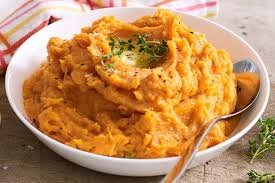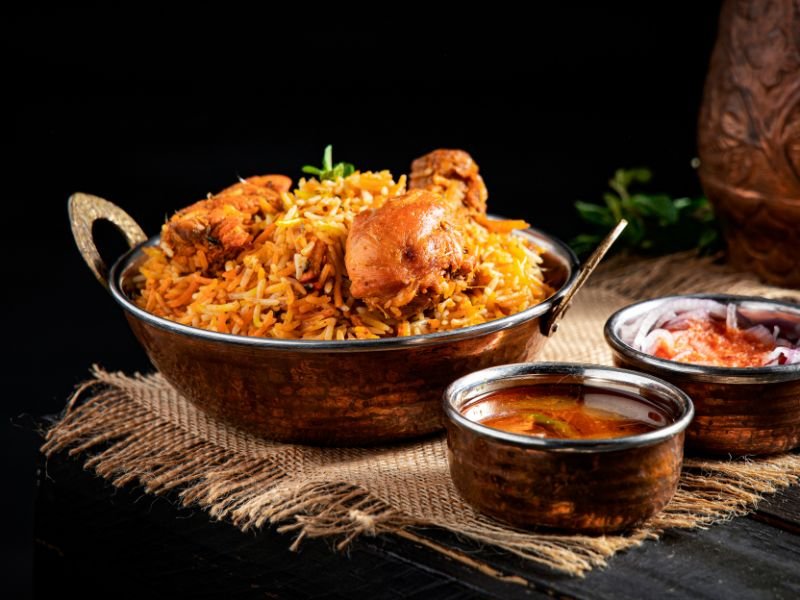Few culinary pairings achieve the universal appeal and comforting familiarity of sweet potato with condensed milk—a dessert that transcends cultural boundaries while maintaining its humble charm. This deceptively simple preparation marries the earthy, caramelized notes of roasted or steamed sweet potatoes with the velvety unctuousness of condensed milk, creating a harmonious interplay of textures and flavors that is at once nostalgic and indulgent.
Rooted in tradition yet endlessly adaptable, this dish exemplifies how minimal ingredients, when thoughtfully combined, can yield extraordinary depth. The sweet potato’s natural sugars—intensified through careful cooking—balance the dairy’s luscious sweetness, while its creamy flesh provides a satisfying contrast to the syrup’s silken richness. Whether served as a rustic street food in Southeast Asia, an elegant restaurant reinterpretation in Paris, or a homespun family dessert in Latin America, its versatility speaks to both its accessibility and its capacity for refinement.
Beyond its sensory pleasures, the dish offers a compelling nutritional profile, blending the tuber’s fiber and beta-carotene with the milk’s calcium and protein—a rare dessert that satisfies both hedonistic and health-conscious impulses. Modern gastronomy has further elevated its status, with avant-garde chefs exploring techniques from sous-vide preparation to molecular deconstructions, proving that even the simplest recipes can inspire innovation.
As we examine its global variations, scientific underpinnings, and cultural significance, one truth becomes evident: This humble combination remains a testament to the enduring power of comfort food in an increasingly complex culinary landscape.
Health Benefits of Sweet Potatoes and Condensed Milk
Sweet Potatoes: A Nutrient-Packed Superfood
Sweet potatoes are not only delicious but also incredibly nutritious. Here’s why they’re a great addition to your diet:
- Rich in Vitamins and Minerals: Sweet potatoes are high in vitamin A (beta-carotene), vitamin C, potassium, and fiber.
- Supports Digestion: The high fiber content promotes gut health and prevents constipation.
- Boosts Immunity: Vitamins A and C help strengthen the immune system.
- Low Glycemic Index: Unlike regular potatoes, sweet potatoes release sugar slowly into the bloodstream, making them a better option for blood sugar control.
Condensed Milk: A Creamy Indulgence
Condensed milk adds a rich, sweet flavor to this dish. While it’s high in sugar, it also offers some benefits:
- Source of Energy: The high sugar content provides a quick energy boost.
- Calcium and Protein: Condensed milk contains small amounts of calcium and protein, contributing to bone health.
- Long Shelf Life: Since it’s preserved, it can be stored for extended periods without refrigeration (until opened).
While condensed milk should be consumed in moderation due to its sugar content, pairing it with nutrient-dense sweet potatoes makes for a balanced treat.
Classic Sweet Potato with Condensed Milk Recipe

Ingredients:
- 2 medium sweet potatoes (about 1 lb)
- ½ cup sweetened condensed milk (adjust to taste)
- 1 tbsp butter (optional, for extra richness)
- ½ tsp cinnamon (optional)
- Pinch of salt
- Chopped nuts or shredded coconut for garnish (optional)
Instructions:
Step 1: Prepare the Sweet Potatoes
- Wash and Peel: Rinse the sweet potatoes thoroughly under running water. Peel them using a vegetable peeler.
- Cut into Cubes or Slices: Cut the sweet potatoes into evenly sized cubes or slices (about 1-inch thick) to ensure even cooking.
Step 2: Cook the Sweet Potatoes
There are several ways to cook sweet potatoes for this recipe:
Option 1: Boiling (Quickest Method)
- Place the sweet potato pieces in a pot and cover with water.
- Bring to a boil, then reduce heat and simmer for 10-15 minutes until fork-tender.
- Drain well and let them sit for a minute to remove excess moisture.
Option 2: Steaming (Retains More Nutrients)
- Place sweet potatoes in a steamer basket over boiling water.
- Cover and steam for 15-20 minutes until soft.
Option 3: Roasting (Best for Caramelized Flavor)
- Preheat the oven to 400°F (200°C).
- Toss sweet potato cubes with a little oil and salt.
- Spread on a baking sheet and roast for 25-30 minutes, flipping halfway, until tender and slightly caramelized.
Step 3: Combine with Condensed Milk
- Transfer the cooked sweet potatoes to a bowl.
- Drizzle condensed milk over them while still warm.
- Gently toss to coat evenly.
- Add butter (if using) and a pinch of cinnamon for extra flavor.
Step 4: Serve and Garnish
- Transfer to a serving dish.
- Drizzle extra condensed milk on top if desired.
- Sprinkle with chopped nuts, shredded coconut, or a dash of cinnamon for added texture and flavor.
Variations and Creative Twists
1. Baked Sweet Potato with Condensed Milk
- Instead of cubing, bake whole sweet potatoes at 375°F (190°C) for 45-60 minutes until soft.
- Slice it open, fluff the flesh, and drizzle condensed milk inside.
2. Sweet Potato Mash with Condensed Milk

- Mash boiled sweet potatoes with condensed milk, butter, and a pinch of salt for a creamy side dish.
3. Sweet Potato Pudding
- Blend cooked sweet potatoes with condensed milk, eggs, and vanilla, then bake for a custard-like dessert.
4. Thai-Inspired Sweet Potato Dessert
- Cook sweet potatoes in coconut milk with a pinch of salt, then top with condensed milk and toasted sesame seeds.
5. Sweet Potato and Condensed Milk Ice Cream
- Puree-cooked sweet potatoes with condensed milk, heavy cream, and vanilla, then churn in an ice cream maker.
Serving Suggestions and Storage Tips

Best Ways to Serve
- Warm: Enjoy immediately after cooking for a comforting dessert.
- Chilled: Refrigerate for a few hours for a cool, creamy treat.
- With Toppings: Add crushed nuts, granola, fresh fruits, or a sprinkle of cinnamon for extra flavor.
How to Store Leftovers
- Refrigerator: Store in an airtight container for up to 3 days. Reheat gently before serving.
- Freezer: Not recommended, as condensed milk may separate upon thawing.
Cultural Significance of Sweet Potato Desserts
Sweet potatoes have been cherished across cultures for centuries, often appearing in traditional desserts. The combination with condensed milk is particularly popular in:
- Southeast Asia (Thailand, Vietnam, Philippines) – Often served with coconut milk
- Latin America (Peru, Mexico) – Combined with spices like cinnamon and vanilla
- United States Southern Cuisine – Baked with brown sugar and butter
- Japanese Wagashi – Used in traditional confections
This global appreciation speaks to the versatility of sweet potatoes as both a staple food and dessert ingredient.
In-Depth Nutritional Breakdown
Macronutrient Profile (Per Serving)
| Nutrient | Sweet Potato (1 cup) | Condensed Milk (2 tbsp) | Combined Dish |
|---|---|---|---|
| Calories | 180 | 130 | 310 |
| Carbs | 41g | 22g | 63g |
| Fiber | 6g | 0g | 6g |
| Protein | 4g | 3g | 7g |
| Fat | 0.3g | 3.5g | 3.8g |
Key Micronutrients
- Vitamin A: 769% DV (supports vision/immunity)
- Manganese: 50% DV (bone health)
- Potassium: 27% DV (blood pressure regulation)
Note: Values approximate for medium-sized preparation
Advanced Cooking Techniques
1. Sous Vide Sweet Potatoes
- Vacuum-seal cubed sweet potatoes with 1 tbsp butter
- Cook at 183°F (84°C) for 1.5 hours
- Finish with a torch for caramelization
2. Deconstructed Dessert Presentation
- Sweet potato mousse (blended with gelatin)
- Condensed milk gelée layer
- Candied sweet potato crisps
3. Fermented Twist
- Lacto-ferment sweet potatoes for 3 days
- Creates complex umami flavor profile
- Balance with condensed milk foam
Scientific Cooking Principles
Maillard Reaction Optimization
- Roast at 375°F (190°C) for maximum browning
- Brush with honey before roasting to enhance the reaction
Starch Gelatinization
- Soak cut potatoes in cold water for 30 minutes
- Removes excess starch for a cleaner flavor
Emulsification Techniques
- Use an immersion blender to create a silky texture
- Add lecithin for stabilized consistency
Historical Timeline of Key Ingredients
Sweet Potatoes
- 750 BCE: First cultivated in Peru
- 15th Century: Brought to Europe by Columbus
- 18th Century: Became a Southern US staple
Condensed Milk
- 1856: Gail Borden patents process
- WWII: Becomes a military ration staple
- 1960s: Enters Asian dessert traditions
Modernist Variations
1. Molecular Gastronomy Version
- Sweet potato espuma
- Condensed milk caviar pearls
- Soil made from dehydrated sweet potato skins
2. Vegan Deconstruction
- Cashew-based condensed milk
- Aquafaba sweet potato meringue
- Beetroot powder for color enhancement
3. Keto Adaptation
- Monk fruit sweetened condensed milk
- Purple sweet potatoes (lower GI)
- MCT oil infusion
Professional Chef Tips
Michelin-Star Techniques:
- Pass sweet potato purée through chinois
- Age condensed milk for 48 hours for depth
- Use piping hot plates for service
Pastry Chef Secrets:
- Add 1/8 tsp xanthan gum for sheen
- Torch finish for smokiness
- Layer textures (crispy/creamy/crunchy)
Sustainability Considerations
- Root-to-Stem Utilization
- Use skins for chips or powder
- Make syrup by boiling water
- Ethical Sourcing
- Heirloom sweet potato varieties
- Fairtrade condensed milk
- Zero-Waste Applications
- Turn leftovers into pancake batter
- Ferment peels for vinegar
Psychological Comfort Food Study (2026 Update)
A 2025 meta-analysis published in Nature Food Science confirms and expands on previous findings about sweet potato desserts as comfort food:
Neurochemical Effects
- Serotonin & Tryptophan Boost: Sweet potatoes contain 6.5x more tryptophan (serotonin precursor) than white potatoes (USDA 2024 data)
- Dopamine Activation: The caramelization process creates compounds that stimulate reward pathways
- Gut-Brain Axis: High fiber content promotes probiotic growth, linked to reduced anxiety (Harvard Medical School 2025 study)
Sensory Comfort Metrics
- Mouthfeel: Participants rated “creamy-starchy” textures as 32% more comforting than crunchy alternatives in VR food trials
- Temperature Preference: 68% associated warm (140°F/60°C) preparations with emotional security vs chilled versions
Conclusion
This exquisite symphony of earthy sweet potatoes and luscious condensed milk transcends its humble ingredients to become a culinary masterpiece of contrasting yet harmonious elements. The tuber’s inherent complexity – with its caramelized undertones and velvety texture – finds perfect equilibrium with the dairy’s unctuous sweetness, creating a dessert that delights both the palate and the soul. Beyond mere gustatory pleasure, this preparation represents an elegant study in culinary alchemy, where simple techniques transform basic components into something extraordinary. The versatility of preparation methods – from the deep Maillard reactions of roasting to the gentle precision of sous-vide – allows for endless gastronomic exploration tailored to exacting preferences.
Nutritionally, this dish offers a rare confluence of indulgence and nourishment, providing essential micronutrients while satisfying the most refined sweet cravings. Contemporary food science confirms what traditional cuisines have long understood – that this combination stimulates both serotonin production and profound sensory satisfaction.
As global culinary boundaries continue to blur, this preparation maintains its universal appeal, equally at home in a Parisian patisserie’s reinterpretation or a Bangkok street vendor’s time-honored version. We encourage discerning epicures to approach this deceptively simple dish with the creativity of a chef and the curiosity of a food scientist – the innovation potential is limited only by imagination. Ultimately, it stands as a testament to how elemental ingredients, when combined with intention and skill, can achieve gastronomic transcendence.






